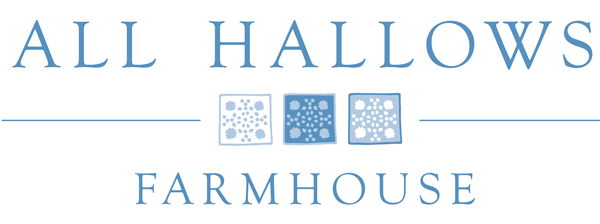This recipe was discovered amongst a pile of old cookery books which lay hidden on a back shelf in a kitchen where I prepared lunch everyday. The method has never let me down since. I loved the fact that the sauce would only take moments before lunch was served, which was always promptly at one o’clock, in unison with the Radio 4 news program!

The family were very discerning in their tastes. Dinner was always served at lunchtime. I was instructed to leave a cold platter for supper, to which they helped themselves, if they so wished.
The main meal of the day was expected to be wheeled on a ‘hostess trolley’ along a long corridor to the inner hall. Here the family dined, if they were not expecting guests or passing callers. The only excuse for the meal to be late was if they were not ‘in residence’. If this should happen, I was to keep everything warm in the AGA simmering oven for their return! These were different times. Rich sauces, pink lamb, scallops in season of course, cheese souffle at least once a week and a fresh orange jelly were amongst their favourites. Not forgetting locally grown asparagus with hollandaise sauce to be served ‘family style’ on Meissen tableware.
To make ample Hollandaise Sauce to serve with a platter of asparagus, you will need:
3 tablespoons white wine vinegar
6 black peppercorns
1 bay leaf
2 free range, organic egg yolks
100 g unsalted butter – cut into small dice
Seasoning to taste – salt, white pepper and lemon juice
Put vinegar and flavourings into a small pan and reduce the liquid to one tablespoon. Strain.
In a small heatproof bowl cream egg yolks with a nut (generous knob) of butter. Place over pan of simmering water.
Mix well and add vinegar, mix until slightly thickened then slowly add diced butter, a cube at a time and keep stirring well..
The water must never boil. Keep stirring and adding butter as each is absorbed.
Taste for seasoning and adjust to suit your personal taste.
Keep warm whilst you poach eggs and serve immediately.
Notes for cooks:
If the sauce curdles then remove from heat and add an egg yolk to stabilise the mixture. Take care – don’t let the sauce become too hot as it will curdle, or if it is too cold the butter will split and not emulsify.
Classically this sauce is made by adding melted butter in a steady stream to the egg mixture.
Add freshly chopped French tarragon, chervil, a little parsley or chives to the finished sauce to create a ‘daughter sauce’ known as Bernaise. Serve with steak, fish and asparagus. Some recipes will also include finely chopped shallot.

Kitchen Hacks & Tips for Poaching Eggs
- Select your supplier carefully. Fresh eggs will hold them shape during poaching.
- To create a perfectly formed poached egg encompassed in its white, you will need to poach one egg at a time in deep water. Alternatively if you are in a hurry and cooking for the family, it is possible to shallow ‘poach’ several eggs in a large sauteuse or wide, flat based pan at the same time. They will not be perfect though!
- Remember you are ‘poaching’ not boiling! So the water must be a gentle simmer,
- Crack the fresh egg into a ramekin or ideally a coffee cup first. This will allow you to gently add the egg to the simmering water.
- If the egg isn’t as fresh as you would like it to be, add a teaspoon of distilled (white) vinegar to the water. This will help coagulate the albumen and your yolk will be more uniformly encased with the white. Alternatively crack the egg into a tea strainer so that the thinner, more liquid part of the white drains away and then gently add the remaining to the simmering water.
- Make a vortex, using a whisk or even a fork in the simmering water and carefully dip the egg directly into this. Obviously this isn’t possible if you are cooking for a crowd, with lots of eggs poaching in a large pan or sauteuse. But do make sure that the water is only simmering.
- Avoid moving the pan as the white forms. If you do the egg will loose it’s shape.
- Poached eggs can be partially cooked, twenty minutes before serving and then suspended in cold water, to be reheated in boiling water just before serving.
Please don’t serve partially cooked eggs or egg sauces to anyone in a vulnerable food group, such as the elderly, infirm, young children and pregnant women.
